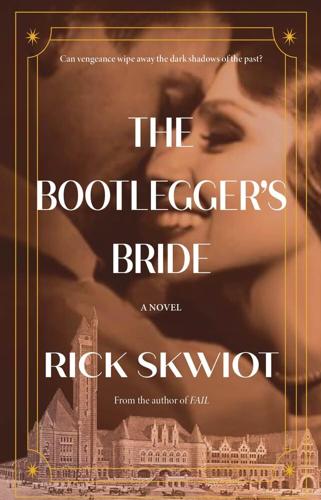Two bodies found 10 years apart in a frozen lake in the Metro East propel this novel through nearly 50 years, from Prohibition gang wars to deadly international conflict.
Along the way, author Rick Skwiot, who was born and raised in ÓŁĚŇĘÓĆľ and has several novels and memoirs to his credit, tells a compelling family story that could have been even more engrossing with a more straightforward timeline and a less cumbersome wealth of details that attempt to establish a sense of local color.
The story in âThe Bootleggerâs Brideâ centers on Jan Nowak, the bootlegger; Hazel, his wife; and A.J., the son whose life is at the core of the novel.
Thereâs Jan, whose is described this way by a one-time ally:

Rick Skwiot
âA slick operator, that Jan Nowak. Acted like he was still some altar boy, but you couldnât trust him. Pulled the wool over Jellyroll Hoganâs eyes and even duped me.â
People are also reading…
Thereâs Hazel, who tells Jan at one of their early meetings:
âGranite Cityâs only a streetcar ride away from ÓŁĚŇĘÓĆľ, but itâs a different world. A doughty steel town where virtually no one looks beyond its smokestacks. At least thatâs the way it seemed to me growing up there. No crystal goblets and chandeliers, no hotels serving roe and French wine. A place where most everyone was happy to settle for what was placed before them. But for me it felt like prison. Literature was my only escape.â
And thereâs A.J., a teen with his motherâs love of books but a quick temper:
âMost students at Granite City High were open-faced Midwesterners, particularly the country kids. Accessible, guileless, smiling. Not A.J. Locked down, humorless, suspicious, and cold â a countenance that encouraged others to keep their distance.â
The story woven around those characters makes âThe Bootleggerâs Brideâ engaging. But its biggest problem might be the herky-jerky way that Skwiot uses time. Chapters move back and forth quickly across decades, with some starting in the bootlegging days of Prohibition and others stretching toward the 1960s and beyond. Thatâs not to say that all good stories need to be told in a linear manner. But here, the action is so diverse and the charactersâ lives so fluid that keeping track of everyone and everything becomes a bit of a chore, making it too often easy to lose the thread of the story and difficult to keep people, places and events straight.
The other issue readers face is the too-frequent use of inconsequential details to establish what the ÓŁĚŇĘÓĆľ area, on both sides of the river, was like at any one time. There is a fine line between using names and streets and songs to create a sense of place and using so many lists and names and locations that they become distracting, not illuminating. Skwiot, who has taught creative writing at Washington University among others, definitely breaches that line at times.
For instance, when Jan and Hazel dine at the Statler Hotel in downtown ÓŁĚŇĘÓĆľ, Skwiot doesnât just say what each of them orders. He lists what could be the entire menu: âVeal Cutlet Milanese, Columbia Shad Roe, Spring Lamb Chops a la Nelson, Steer Sirloin Steak, French Claret or Chardonnay, Roquefort Cheese and Chocolate Ăclair.â It might make your mouth water, but it slows the narrative.
Similarly, when Jan heads to downtown ÓŁĚŇĘÓĆľ after church at St. Stanislaus Kostka, he takes âthe number 104 streetcar that ran down the middle of North Florissant Avenue,â then gets off where it ends at the Post-Dispatch building. After he climbs the stairs to street level, he heads down 12th Street to Washington, then east toward the Mississippi River. âAt Broadway he cut over a block to Lucas Street, which soon dipped downhill toward the wharf and river.â Such a detailed route may help an Uber driver, but readers could easily lose patience.
Skwiot acknowledges how the Post-Dispatch archives, among other sources, were valuable in helping him establish local color on both sides of the river. And as the novelâs action moves toward its climax, the comprehensive level of detail dwindles. But if it had been used more sparingly throughout, readers could have gotten just as good a sense of place, without having to wade through a flurry of facts, and âThe Bootleggerâs Brideâ would have benefitted.












